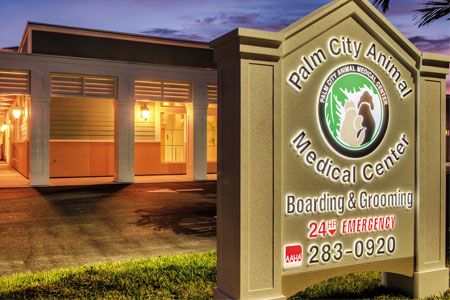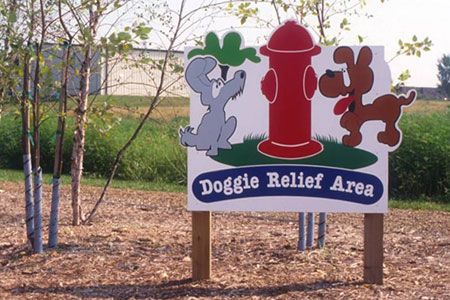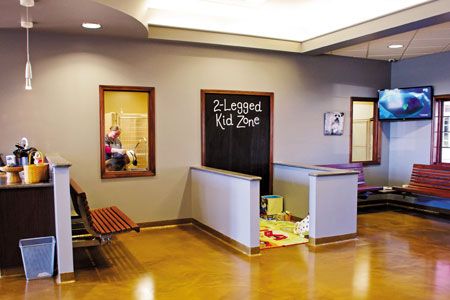5 ways to make veterinary clients' lives harder
Follow these common design faux pas and you'll have veterinary clients frustrated in no time.
Next >
You know clients love a good challenge. The question is, are you making their clinic experience difficult enough? Pet owners would be suspicious if they didn't have a few hoops to jump through to seek veterinary care-right? Wrong, says Dan Chapel, AIA, president of Chapel Associates Architects in Little Rock, Ark.
“Veterinarians need to start thinking about the clients' whole experience,” he says.
Here are five design ideas that make clients want to rip their hair out, and tips on how to redeem your reputation.
1. Stick with a small hospital sign.

Palm City Animal Medical Center does signage right in Palm City, Fla.
If clients aren't squinting, then your hospital sign is too big, said no veterinary architect ever. In fact, Chapel says there's nothing worse than hospital signage that's not clearly visible from the road. When planning for your sign, he suggests hopping in your car and approaching your hospital from both directions. This way you get a better perspective on the best place to put the sign and how big it should be. Make sure your practice sign is lit like the one pictured above, Chapel says.
“Your veterinary practice can get a lot of great advertising at night,” he says.
Click the Next button to see more more mistakes
Photo by Thomas Winter
2. Skip the pet potty.

The New Hope Animal Hospital team in Rogers, Ark., had clients-and canines- in mind when they designed this pit stop.
“What does a dog have to do get a break around here?” That's what your patients will be thinking if you don't add a pet relief area outside of your clinic. It's the perfect spot for excited and car-confined pets to do their business before entering the hospital, Chapel says. The best part? It might prevent some accidents inside.
“If they use it, it'll prevent extra clean-ups and save the embarrassment of the clients,” Chapel says. “If they don't use it, at least they know you provided it for their convenience.”
Photo courtesy of Dan Chapel
3. Cover up your entrance.

Pet owners won't have trouble finding this hospital entrance at Upstate Veterinary Specialists in Asheville, N.C.
If a veterinary architect can't find the front door to your clinic, you might be in trouble.
“I've been to hospitals where I couldn't find my way in,” Chapel says. “You see the exit door, and the staff-only door, and you don't know how to get inside the darn thing.”
Make sure your hospital entrance is more than obvious to clients. Chapel says you'll probably have the most success with a single entry door. Double doors have a tendency to pinch tails and little hands, he says.
Photo by David Dietrich
4. Make clients really work to find the reception desk.

Clients are greeted the second they walk in the door at Animal Neurology, Rehab & ER Center in Commerce, Mich.
Clients are always up for a good game of hide-and-seek-oh no wait, that's your canine patients.
Once pet owners get through that door, you want to make it easy to find the receptionist, Chapel says. “In a perfect world, the receptionists' desk lines right up with the entry door,” he says.
Photo by Jerry Zolynsky
5. Make clients really work to find the reception desk.

Country View Pet Hospital in Wilmington, Ohio, knows the key to clients' hearts is through distractions.
You want your waiting room to be free from distractions so clients can reflect on their downtime in the clinic. Actually, scratch that-you want their wait time to go by as fast as possible, Chapel says.
“Try to make reception a place where clients can hang out and maybe get a little bit of education,” Chapel says. “I often recommend that clinics place pet products nearby.”
He also recommends a combination of bench seating and movable chairs so clients can group seats together if they want. And it doesn't hurt to have a flat-screen TV.
At a minimum you want to offer a coffee bar and bottled water in an ice tub, Chapel says. Don't worry if they take the coffee-it's the smell you're after. The smell of coffee can mask unpleasant clinic odors.
After the exam, you want clients' journey out of the hospital to be just as intuitive.
“We're trying to eliminate people just wandering around your hospital,” Chapel says. “We want them to move quickly from Point A to Point B, and then Point B to Point C.”
Photo by Elaine Wingo